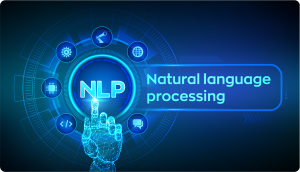
Timely benefit verification is crucial for ensuring patients get the care they need without delays. Delays and errors can frustrate patients and add extra costs for providers. This is where AI and ML come in, transforming how benefit verification is done. Here’s why quickly adopting AI for healthcare benefit verification is so important and how it can greatly improve the process.
Why does this matter?
According to a Harvard Business School study, AI has been shown to help workers complete 12.2% more tasks at a 25.1% faster rate. A joint study by Stanford and MIT found that using AI tools led to a 14% increase in staff productivity and better employee retention. These statistics are game changers in the context of benefit verification.
Why does benefit verification hinder our ability to provide timely care?
Patient Information Collection
Initial Registration: Incomplete or inaccurate patient details can lead to long wait times and miscommunication.
Insurance Information: Incorrect or outdated insurance details and misunderstandings of insurance terminologies are common issues.

Verification Request Submission
Submission Methods: Delays in manual submission processes and technical issues with electronic systems often cause bottlenecks.
Documentation: Missing or incomplete documentation is a frequent hurdle.

Insurance Company Verification
Coverage Confirmation: Slow response times from insurers and discrepancies between submitted information and insurer records create delays.
Benefits Analysis: Unclear pre-authorization requirements and inconsistent information on service limits add to the confusion.

Communication of Verification Results
Provider Notification: Delays and errors in transmitted verification results can occur.
Updating Patient Records: Delays and data entry errors are common issues.

Patient Communication
Informing the Patient: Complex insurance details can be difficult to explain, leading to patient confusion.
Addressing Concerns: Resolving discrepancies quickly is often challenging.

Pre-Authorization and Pre-Certification (if required)
Pre-Authorization Submission: Time-consuming processes and frequent denials are typical.
Approval or Denial Notification: Delays and lack of clarity in denial reasons are frustrating.

Ongoing Verification and Updates
Continuous Monitoring: Resource-intensive monitoring is necessary to keep up with frequent insurance changes.
Periodic Verification: The volume of periodic verifications can be overwhelming.

The Real Struggle: Manual Processes and Their Shortcomings
Manual Processes: A Time Drain
Healthcare staff often spend a lot of time on the phone with insurance companies and manually entering data into different systems. This tedious work eats up valuable time and can lead to mistakes. Picture a nurse stuck on hold for hours just to verify insurance coverage, time that could be better spent attending to patient care or other critical tasks.
Data Inconsistency: The Root of Delays
Errors in patient or insurance details can cause delays and rejections. Different data formats across systems make verification even harder. For example, a misspelled name or an extra digit in an insurance ID can lead to long delays as staff fix these issues manually.
Lack of Real-Time Information: A Major Roadblock
Without real-time insurance info, healthcare providers often face treatment delays, causing unexpected costs and stress for patients. Imagine urgent surgery being delayed due to outdated insurance info, causing anxiety for the patient and their family.
High Administrative Costs: A Financial Strain
Manual benefit verification takes a lot of time and money. The labor involved in follow-ups and fixing errors drives up costs, diverting funds that could be better used for patient care.
Patient Dissatisfaction: The Ultimate Consequence
Delays in benefit verification can frustrate patients, causing anxiety and reducing satisfaction with their healthcare experience. Long wait times and miscommunications about coverage lead to dissatisfaction, hurting the provider’s reputation.
Embracing AI & ML: A Game-Changer for Healthcare Benefit Verification

-

Automating Routine Tasks
AI and ML can handle many routine tasks in benefit verification. These technologies quickly recognize and extract information from documents, reducing the need for manual data entry. This speeds up the process and minimizes human error. Imagine a system that automatically processes insurance documents, verifying information in real-time.
-

Standardizing Data for Seamless Integration
Advanced AI systems can standardize data formats and integrate information from various sources, ensuring accuracy and consistency. This unified approach simplifies the verification process, making it more efficient and reliable.
-

Real-Time Data Access for Immediate Decisions
AI-powered systems provide real-time access to insurance information, enabling quicker decision-making and reducing patient wait times. Immediate coverage confirmation reduces patient stress and improves their experience.
-

Reducing Administrative Costs
Automating the verification process significantly cuts administrative costs. AI and ML handle large volumes of data more efficiently than human staff, allowing resources to be redirected to more critical areas of patient care. Savings from reduced administrative costs can be reinvested into enhancing patient care and adopting new medical technologies.
-

Enhancing Patient Experience
Faster verification means patients spend less time waiting and more time receiving care, leading to higher satisfaction and better outcomes.
Conclusion: Embracing the Future
Healthcare benefit verification presents several challenges. By outsourcing revenue cycle management offshore and adopting the latest technologies in AI and ML, healthcare providers can streamline the verification process, reduce administrative burdens, and deliver better care. Embracing these advanced technologies is key to overcoming current challenges and achieving a more efficient, patient-centric system.
In summary, integrating AI and ML in benefit verification is not just a technological upgrade; it’s a paradigm shift in how healthcare providers manage their administrative processes. Whether you’re a small clinic or a large hospital, embracing AI and ML for benefit verification is a step towards a brighter, more efficient future in healthcare.










